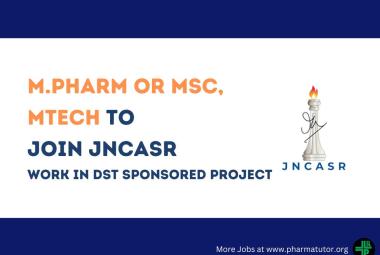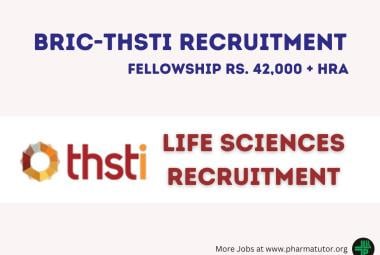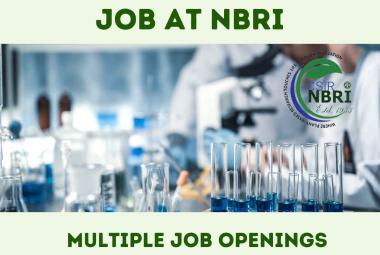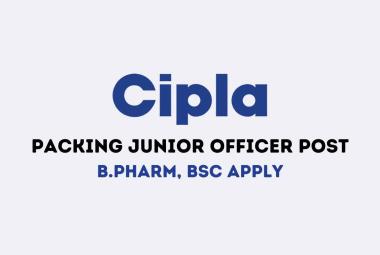 About Authors:
About Authors:
*Avanish kumar dubey, Amit singh
R.V. Northland Institute dadri,
G.B. Nagar UP
*avpharma001@gmail.com
Abstract
Polymer nanoparticles have attracted the interest of researcher and have been utilized the increasing number of field. Generally two main strategies are employed for the preparation of polymeric nanoparticles. either polymerization of monomers or the dispersion of pre-form polymers. Various techniques can be used to produce polymeric nanoparticles such as salting out method, double desolvation method, ionic gelation method, cross linked nanoparticles, nanoparticle by super critical fluid, emulsification and solvent evaporation method. The choice of method depends on a number of factor such as particle size, particle size distribution, area of application, nature of polymer etc. This review cover the general description on various methods of the preparation of polymeric nanoparticle.
Reference Id: PHARMATUTOR-ART-1442
Introduction
As name only suggest polymeric nanoparticles are nanoparticles which are prepared from polymers. The drug is dissolved, entrapped, encapsulated or attached to a nanoparticles and depending upon the method of preparation, nanoparticles, nanospheres or nanocapsules can be obtained. Nanocapsules are vesicular systems in which the drug is confined to a cavity surrounded by a polymer membrane, while nanospheres are matrix systems in which the drug is physically and uniformly dispersed.1
In recent years, biodegradable polymeric nanoparticles have attracted considerable attention as potential drug delivery devices in view of their applications in drug targeting to particular organs/tissues, as carriersof DNA.
ingene therapy,and in their ability to deliver proteins, peptides andgenes through aperoral route of administration.
In spite of development of various syntheticand semisynthetic polymers, natural polymers still enjoy their popularity in drug delivery, some of them arelisted bellow.
· Gums(Ex. Acacia, Guar,etc.)
· Chitosan
· Gelatin
· Sodiumalginate
· Albumin
A range of materials have been employed to delivery of bioactive agents. Pharmaceutical Scientist borrowed polymers intended for other, non biological uses. A polymer used in controlled drug delivery formulations, must be chemically inert, non-toxic and free of leachable impurities. It must also have an appropriate physical structure, with minimal undesired aging, and bereadilyprocessable. Some ofthe polymeric materials arelisted bellow.2
· Cellulosics.
· Poly(2-hydroxyethyl methacrylate).
· Poly(N-vinyl pyrrolidone).
· Poly(methyl methacrylate).
· Poly(vinylalcohol).
· Poly(acrylicacid).
· Polyacrylamide.
· Poly(ethylene-co-vinyl acetate).
· Poly(ethyleneglycol).
· Poly(methacrylicacid).etc.
However, in recent years additional polymers are designed primarily for medical applications and have entered the arena of controlled release of bioactive agents. Many of these materials are designed to degrade within the body, most popular onesare;3
· Polylactides (PLA).
· Polyglycolides (PGA).
· Poly(lactide-co-glycolides) (PLGA).
· Polyanhydrides.
· Polyorthoesters.
· Polycyanoacrylates
· Polycaprolactone
Originally, polylactides and polyglycolides were used as absorbable suture material. The main advantage of these degradable polymers is that they are broken down into biologically acceptable molecules that are metabolized and removed from the body via normal metabolic pathways. However, biodegradable materials do produce degradation by-products that must be tolerated with little or no adverse reactions within the biological environment.3
Abraxane is the first polymeric nanoparticle based product from American Pharmaceutical Partners, Inc., and American Bioscience, Inc. (ABI). It was approved in year 2005 and is consisting of albumin-bound paclitaxel nanoparticles. This product is free of toxic solvents like cremophor-EL, which is used until now to solubalize paclitaxel in order to administer it intravenously to the patient. cremophor-EL is known to cause life-threatening allergic reactions. Success of Abraxane show that nanotechnology can bring many exciting products which can overcome many hurdle of formulation scientist.
Definition of polymer nanoparticle
Nanoparticles are defined as solid colloidal particles ranging in size between 1-1000 nm.consisting of various macromolecule in which drug can be adsorved, entrapped or covalently attached.the term polymer nanoparticle is a collective term given to all kind of polymer nanoparticle but specifically for nanospheres and nanocapsules. Nanospheres are matrix particle while nanocapsules are vesicular syatem acting as a kind of reservoir.
They have recently been extensively investigated in biomedical and biotechnological areas especially in drug delivery system for drug targetting.
Depending on the desired administration route the size of the carriers should be optimized. They serve as a novel drug delivery system (hughes 2005). It has been observed that successful delivery of drug molecules to the target tissue and it’s therapeutic efficacy can be enhanced by targeting the drug through polymeric nanoparticles as carrier (Reddy et al.2004).
Preparation techniques for polymer nanoparticles
Polymer nanoparticle can be prepared either from preformed polymer or by direct polymerization of monomers using classical polymerization or poly reactions. Methods like salting-out, solvent evaporation dialysis, hot homogenization, cold homogenization high shear homogenization, ultra sonication, solvent evaporation method, micro emulsion based preparation, preparation by using supercritical fluid, spray drying method, double emulsion method.
Salting out
Polymer and drug is dissolved in acetone, and this solution is emulsified under vigorous mechanical stirring in an aqueous gel containing the salting out agent and a colloidal stabilizers. This oil in water emulsion is diluted with a sufficient volume of water or aqueous solution to enhance the diffusion of acetone into the aqueous phase, and induce the formation of nanoparticles. Solvent and salting out agents are eliminated by cross flow filtration. Salting out agents for acetone are the various electrolytes magnesium chloride, calcium chloride etc.
NOW YOU CAN ALSO PUBLISH YOUR ARTICLE ONLINE.
SUBMIT YOUR ARTICLE/PROJECT AT articles@pharmatutor.org
Subscribe to PharmaTutor Alerts by Email
FIND OUT MORE ARTICLES AT OUR DATABASE
Table-1 Example ofnanoparticle preparedfromsalting outmethod:
|
Polymer |
Salting out agent |
Organic solvent |
Particle size(nm) |
|
PDLLA |
Mg(CH3COO2)2. 4H2O |
Acetone |
295 |
|
PEO |
MgCl2 .6H2O |
Acetone |
280±03 |
|
PLGA |
MgCl2 .6H2O |
THF |
>200 |
|
PLGA |
CaCl2 |
Acetonitrile |
480 |
|
PDLLA |
MgCl2 .6H2O |
Acetone |
279±10 |
|
PDLLA |
MgCl2 .6H2O |
Acetone |
248 |
|
PMA |
NaCl |
Dil.HCl |
100-250 |
|
PLGA |
PVA |
Acetone/DCM |
111.4±2.3 |
Nanoparticles by double desolvation method
Gelatin nanoparticle are prepared by two step desolvation method. Gelatin is dissolved in water under heating. In order to achieve the desolvation and rapid sedimentation of the gelatin, acetone is added to this solution. The supernatant having low molecular weight gelatin fraction is removed decanting. The remaining sediment is re –dissolved in water under heating. The gelatin is then desolvated again by drop wise addition of acetone . after 10 min stirring, tween 80 and drug is added. Again stirred it. Glutaraldehyde is added to cross link the particles are purified by threefold centrifugation and re-dispersed in acetone/water.
Coacervation or ionic gelation method
Different method are adopted to prepare nanoparticles from these hydrophilic polymers, cadvo and co-workers have reported preparing hydrophilic chitosan nanoparticles by ionic gelation method. In this method the positively charged amino groups of chitosan interacts with the negatively charged tripolyphosphate to form coacervates, with size in the nanometer range. These nanoparticles have good association with proteins and their size (200-1000 nm) and zeta potential (+20 mv and +60 mv) can be modulated.
Nanoparticles from hydrophilic polymer can be prepared by the complex coacervation which is the spontaneous phase separation process that occurs when oppositely charged macromolecules are mixed and it is a result of electrostatic and coacervates from under mild conditions where as ionic gelation involves the material undergoing transition from liquid to gel due to ionic interaction.
Cross linked nanoparticles
Nanoparticles are prepared by watwr-in-oil (w/o) emulsion method using ultrasonication and cross linking agents such as glutaraldehyde and sodium tripolyphosphate etc. drug and polymer
is dissolved in suitable solvent, stirring vigorously and then sonicated at room temperature, cross linking agents saturated with organic solvents containing surfactant are added slowly to the emulsion by using a dropping funnel and then stirred. The suspension obtained centrifuged and washed with suitable solvent like methanol acetone etc.
Production of nanoparticles using super critical fluid technology
In this method, the solute is solubilized in a supercritical fluid and the solution is expanded through a nozzle. Most of the polymer exhibits little or no solubility in supercritical fluid making the technique less of particle interest.
Emulsification diffusion
Polymer is dissolved in the water-saturated solvent and this organic phase is emulsified, under vigorous agitation,in an aqueous solution containing a stabilizer, the subsequent addition of
water to the system cause the solvent to diffuse into the external phase, resulting in the formation of nanoparticles, solvent can be eliminated by distillation or cross flow filtration.
Emulsification evaporation
This method is patented by vander haff et al. for the preparation of pseudo latexes or artificial latexes. The polymer and the drug are dissolved in a water immiscible organic solvent, which is emulsified in an aqueous solution. This crude emulsion is then exposed to a high-energy source such as ultrasonicator, homogenizers, colloid mills or micro-fluidizers to reduce the globule size. The organic solvent is removed by heat, vacuum or both, results in the formation of a fine aqueous dispersion. A good emulsion homogenization produces droplets with a diameter below 0.5 µm and thus a similar size is yielded for nanospheres.
Solvent displacement
This method was first described and patented by fessi et al. In this process polymer, drug and a lipophilic stabilizer (phospholipids) are dissolved in a semi-polar water miscible solvent such as acetone or ethanol. This solution is poured or injected into an aqueous solution containing a stabilizer (PVAL or poloxamer 188 ) under magnetic stirring. Nanoparticles are formed instantaneously by rapid solvent diffusion ,which is then eliminated from the suspension under reduced pressure. Solvent displacement is not an efficient means to encapsulate water-soluble drugs.
Conclusion
The main goal of this review is to provide information about the methods that are available for preparing polymeric nanoparticles. It was observed that preparing polymeric nanoparticles is a art of technology which requires choosing a sutable technique among the various possible methods, through the utility of homogenization process, appropriate surfactants, co-surfactentand sutable initiating system to obtain desire polymeric nanoparticles with optimum property enhancement. Method like solvent evaporation, emulsion diffusion solvent displacement etc are environment friendly.
On the other hand the fundamental knowledge about the method of preparation of polymeric nanoparticles is still limited. The effect of the homogenization conditions and the control of droplet size distribution, which determine the particle size but morphology not fully understood.
Reference
1. Schmid G,nanoarticles from theory to applications. Weinheim,germany,Wiley-VCH publishers,2004
2. J.Prashad rao, polymer nanoparticle progress in polymer science, Elsevier journal,2011
3. Abdelmoety, E. M.; Khattab, F. I.; Kelani, K. M.; Aboualalanein, A. M., IL Farmaco, 2003, 57(11), 931-938.
4. Aloudah, N. M.; Radwan, M. A.; Alomar, N. F.; Jacobs, S. J., Liquid Chrom. & Rel.Technol., 2005, 28, 591-600.
5. Bilati U , Allemann E Deolker E, nanoprecipition versus emulsion based techniques for the encapsulation of proteins into biodegradable nanoparticles process related stability issues. AAPS sci. tech. 2005;6(4):E594-E604.
6. Banker G.S., Rhodes C.T., modern pharmaceutics, 4th editation, vol.121,529-531.
7. Benita S, Levy M.Y. magenhein B, A new in-vitro technique for the evaluation of drug release profile from colloidal carriers-ultra filtration technique at low pressure. Int J Pharmaceutics,1993 (94),115-123.
8. Bellare J,Banerjee R, Das S. Aspirin loaded albumin nanoparticles by coacervation. Implications in drug delivery. Trends Bio. Artif organs. 2005 (1),18(2).
9. Bhawana, Basniwal RK, Buttar HS, Jain VK, Jain N. ‘‘Curcumin nanoparticles: preparation, characterization, and antimicrobial study.’’ J Agric Food Chem. 2011 Mar 9;59(5):2056-61.
10. Bhalekar MR, Pokharkar V, Madgulkar A, Patil N, ‘‘ prepration and evaluation of solid lipid nanoparticles for topical delivery’’ aaps pharm scitech.2009,10(1):289-96.
11. Chen Y, Jia Z, Schaper A, Kristiansen M, Smith P, Wombacher R, Wendorff J H,Grie A. Hydrolytic and Enzymatic Degradation of Liquid-Crystalline Aromatic/Aliphatic Copolyesters Biomacromolecules, 2004;5:11–16.
12. Cunha-Azevedo EP, Silva JR, Martins OP, Siqueira-Moura MP, Bocca AL, Felipe MS, Tedesco AC, Azevedo RB. ‘‘In vitro antifungal activity and toxicity of itraconazole in DMSA-PLGA nanoparticles.’’ J Nanosci Nanotechnol. 2011 Mar;11(3):2308-14.
13. Desai G Kashappa, Park J.H. preparation, characterization and protein loading of hexanoyl-modified chitosan nanoparticles. Drug delivery, 2006;357-381.
14. D’souza S.S., Deluca PP, development of a dialysis in-vitro release method for biodegradable microspheres. AAPS pharm Sci. Tech 2005,6(2) article 42.
15. Dentinger, P. J.; Swenson, C. F., The annals of Pharmacology, 2009, 43(3), 485-489.
16. Farrigia A.C, Groves J.M. Gelatin behavior in dilute aquous solution ,designing a nanoparticulate formulation. J.Pharm. pharmacol. 1999,51,643-649.
17. Foulds, G.; Brennan, D.; Wajszczuk, C., J. Clin. Pharmacol., 1982, 28, 363-366.
18. Ferdous AJ, Stembridge NY, Singh M. ‘‘Role of monensin PLGA polymer nanoparticles and liposomes as potentiator of ricin A immunotoxins in vitro.’’ J Control Release. 1998 Jan 2;50(1-3):71-8.
19. Allemann,E Gurny R,Doelker E preparation of aqueous polymeric nanodispersion by a reversible salting out process influence of process parameters on particle size. Int J Pharm 1992;87:247-53.
20. De Jeghere F, Allemann E, Leroux JC, Formulation and lyoprotection of poly(lactic acid- co-ethylene oxide)nanoparticles influence on physical stabilityand invitro cell uptake.
NOW YOU CAN ALSO PUBLISH YOUR ARTICLE ONLINE.
SUBMIT YOUR ARTICLE/PROJECT AT articles@pharmatutor.org
Subscribe to PharmaTutor Alerts by Email
FIND OUT MORE ARTICLES AT OUR DATABASE










.png)


